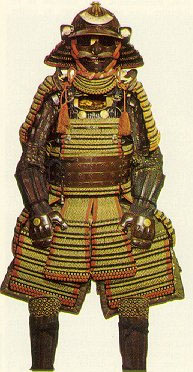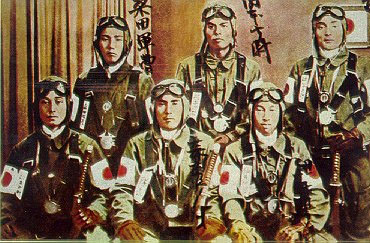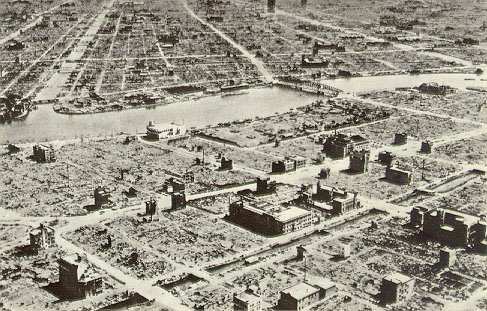Japan today
II A foundation of an Empire
II.1 A too big neighbour
Once again, Japan occupies a very specific situation in the history of Asia, due to its insularity. Japan, at its beginning, has on the other side of the Sea of Japan, China at the height of its fame, the Han's one (IIIrd BC to IIIrd AC) followed by the Tang's one (VII to Xth AC). Such a country is the only historic "partner" : a very civilised, homogeneous and massive country. A very heavy shadow, but a source of culture and benefits. An origin that Japan hasn't ever forgotten and always revered. Moreover, by its total isolation, Japan could easily feel the difference of cultural levels. So, it was always conscious of the nature of its borrowings and, in the same way, of its own specifications. So, it could realise the kind of its influences and try to preserve its specificity. It's one of the reasons why, in the sixth century, when the Chinese influence became too important, the court decided to draft the national chronicles - Kojiki and Nihongi (also called Nihon Shoki) - where were compiled the myths and legends of Gods, supermens..., like the Greek mythology, one thousand years before, to recommend the spirits and forefathers cult, Two documents which were used until the end of the Second World War, as reference of the Japan's history. The result was a divination of everything : mounts, waters, rocks, forests, hearths, tools or armours... It allowed the total separation from the Chinese influence which remained attached to Confucianism. To resume, Japan's old history could be resumed in a dialogue where the Japanese answered "Yes, but..."
It's one of the reasons why, in the sixth century, when the Chinese influence became too important, the court decided to draft the national chronicles - Kojiki and Nihongi (also called Nihon Shoki) - where were compiled the myths and legends of Gods, supermens..., like the Greek mythology, one thousand years before, to recommend the spirits and forefathers cult, Two documents which were used until the end of the Second World War, as reference of the Japan's history. The result was a divination of everything : mounts, waters, rocks, forests, hearths, tools or armours... It allowed the total separation from the Chinese influence which remained attached to Confucianism. To resume, Japan's old history could be resumed in a dialogue where the Japanese answered "Yes, but..."II.2 The birth of an empire and dictators
The creation of the Empire was started in 660 BC by the Emperor Jimmu, descendant of the Goddess Amaretsu, but its real source dates from the sixth century when Nihon Shoki and Kojiki were written. As soon as the empire was established (with a copy of the Chinese administrative system), Buddhism easily asserted itself, more particularly in the second period of Nara (710-794), when six Buddhist sects forced their conceptions to the court. That's the reason why the Emperor changed the capital twice (Nagaoka in 784, Ky�to in 794). As far as 858, with the establishment of Fujiwaras and their success in keeping peace and prosperity, many conflicts between different warlords, called Shoguns, broke. It was the time of the famous Samurais. In this way, until 1575, Japan suffered a continuous civil war between shoguns and the Emperor, the presence of two governments (the Emperor's or shogun's ones called bakufus), alliances, treasons... But, during that time, Europeans, such as Portuguese or Dutch merchants, started to settle on the coast, even importing muskets, which totally changed the techniques of war and allowed the advents of new lords.
As soon as the empire was established (with a copy of the Chinese administrative system), Buddhism easily asserted itself, more particularly in the second period of Nara (710-794), when six Buddhist sects forced their conceptions to the court. That's the reason why the Emperor changed the capital twice (Nagaoka in 784, Ky�to in 794). As far as 858, with the establishment of Fujiwaras and their success in keeping peace and prosperity, many conflicts between different warlords, called Shoguns, broke. It was the time of the famous Samurais. In this way, until 1575, Japan suffered a continuous civil war between shoguns and the Emperor, the presence of two governments (the Emperor's or shogun's ones called bakufus), alliances, treasons... But, during that time, Europeans, such as Portuguese or Dutch merchants, started to settle on the coast, even importing muskets, which totally changed the techniques of war and allowed the advents of new lords.Japan's taste for expansion and colonisation started when a Shogun from the north, Oda Nobunaga, followed by one of his generals, Hideyoshi, who rebelled against him, succeeded in conquering all the territory, by beating all the Daimyos (little independent lords) with a vast army. To derive benefits from this army he launched a vast offensive on Korea, in 1592, which was totally abandoned in 1598 when Hideyoshi died. As Japan was in a bad way, Tokugawa Ieyasu, ally of Hideyoshi, started again the unification of the country by beating the last daimyos in 1600. He established his bakufu at Edo, which became the new capital.
II.3 An appetite for development
As soon as the country was stabilised, the son of Tokugawa Hidetada amplified the decisions his father has taken, especially towards foreigners: Foreigners couldn't approach Japanese ports whereas they were asking for a opening to international commerce, or were massacred like Christians in 1637. Bafuku was compelled to sign an agreement first with Perry, in 1854 and after with all other western countries... A part of the population didn't agree: they deposed the Shogun and put Matsushito on the throne. Edo was re-appointed T�ky� and a new age started : The famous era of Meiji.From that time, Japan took example on Europeans for its administration, dress, causing revolts between 1874 and 1877. Then, the time of expansionism was coming: in 1894, Japan started conquering China and invaded Formose.
 In 1902, Japan signed a treaty with Great Britain to prevent Russian operations in Korea. A naval war broke in 1904 and the Russian navy was totally destroyed, enabled the Japanese to settle in Manchuria. During the First World War, Japan has taken part with allies to fight the Bolshevists until 1922.
In 1902, Japan signed a treaty with Great Britain to prevent Russian operations in Korea. A naval war broke in 1904 and the Russian navy was totally destroyed, enabled the Japanese to settle in Manchuria. During the First World War, Japan has taken part with allies to fight the Bolshevists until 1922.Nevertheless, the next war was disastrous for Japan. For, after attacking Pearl Harbor and winning some victories in the Pacific, the dropping of the atomic bombs on Hiroshima and Nagasaki were terrible for Japan which was totally ruined and occupied for the first time of its history... Happily, the American intervention with MacArthur was a complete success in the reconstruction of the country and its economy allowing it to possess a solid system, with the success we all know....

Tokyo at the end of the second world war�: US bombardments made over 135,000 victims
